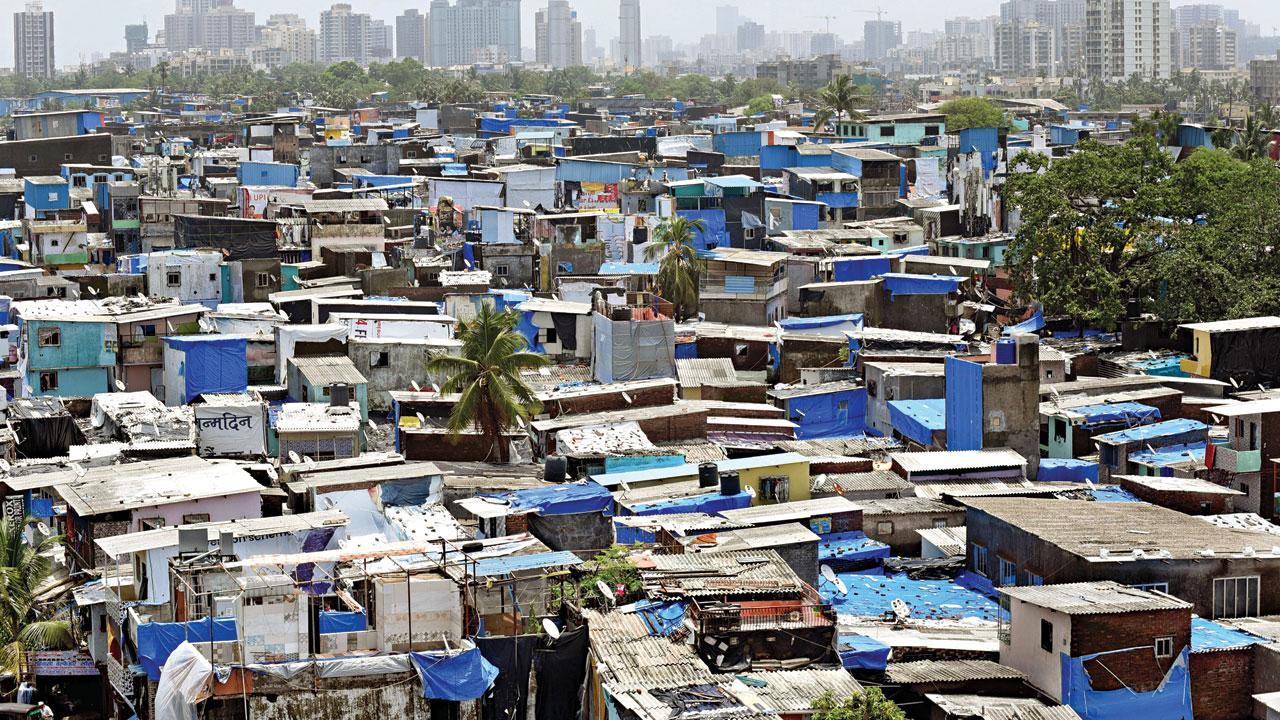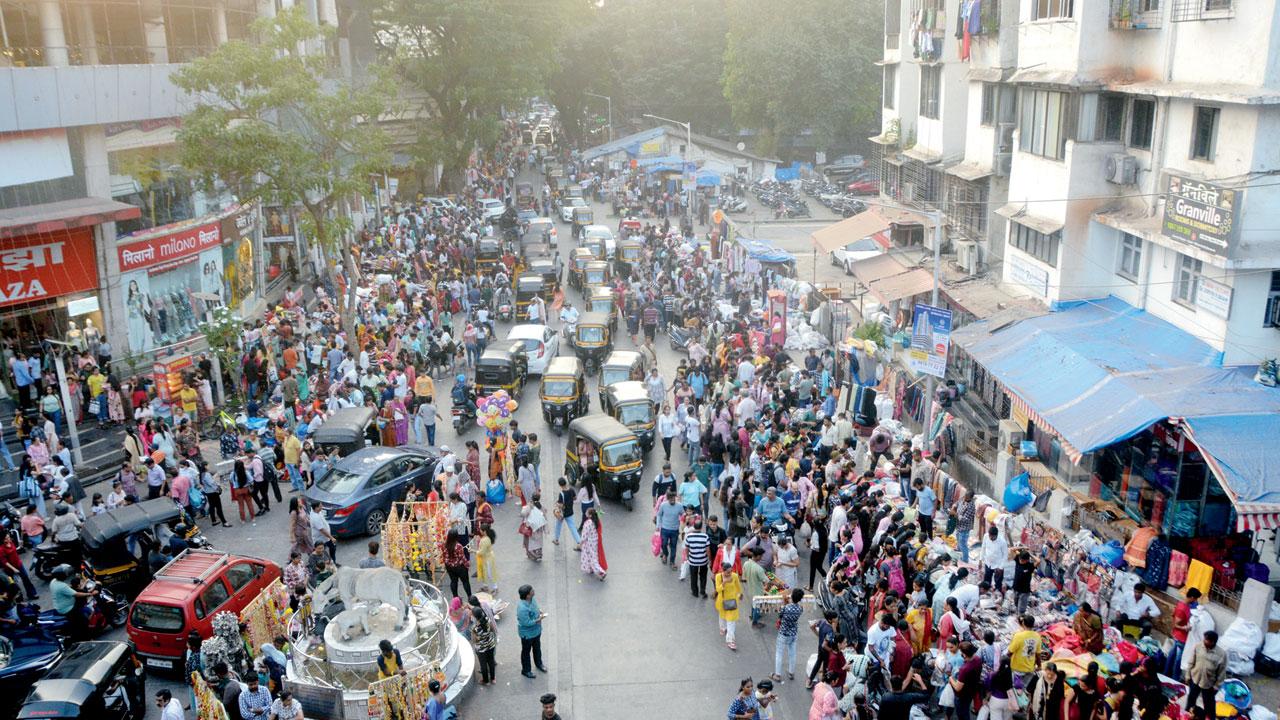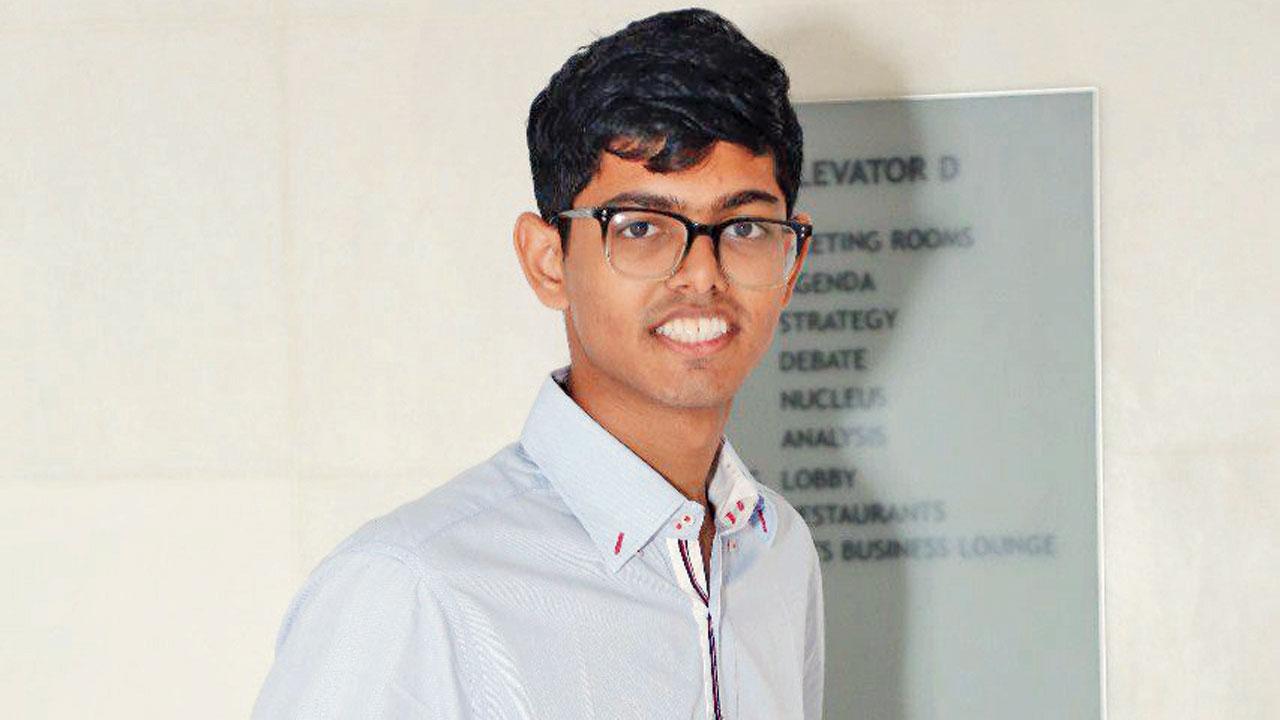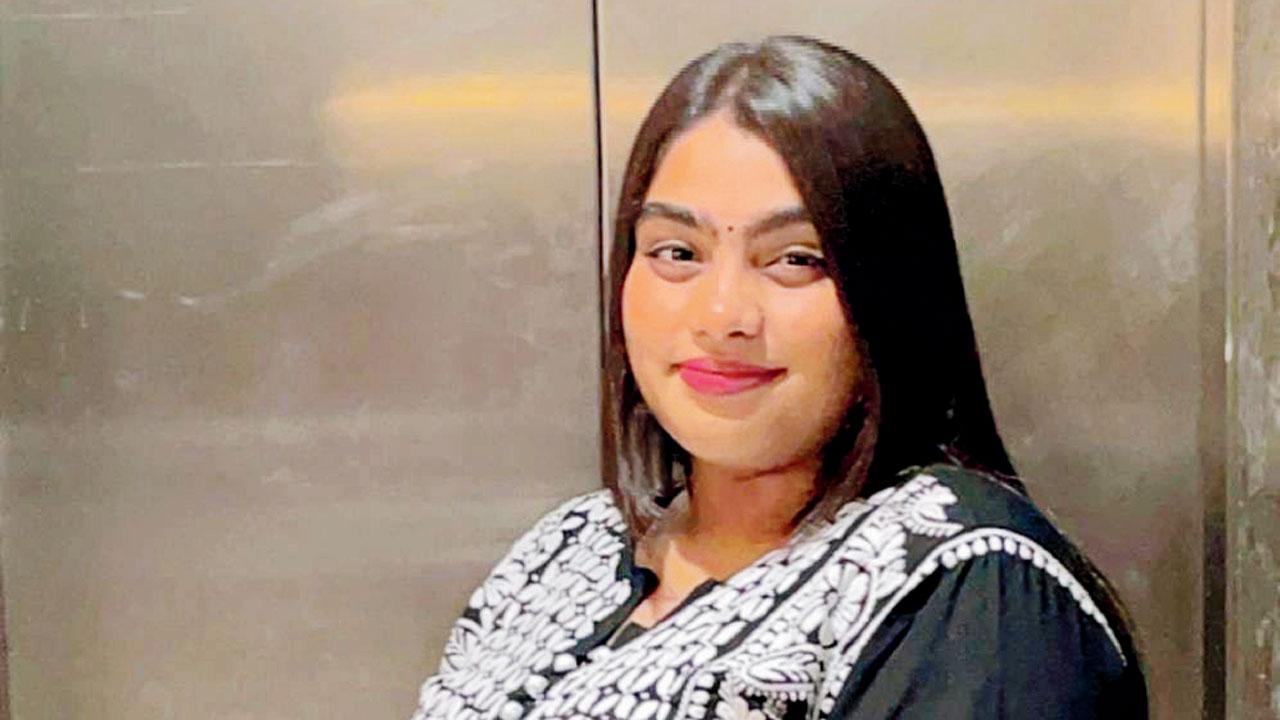Political fight in Mumbai North is not just about numbers but also about appealing to a wide array of cultural and community interests

Illegal structures in the Malvani area on Malad West. Pic/Sameer Markande
The Mumbai North Lok Sabha constituency has become a hotbed of political activity and fierce competition as the elections approach. Known for its diverse population and dynamic electorate, Mumbai North is witnessing a high-stakes battle among major political players. The constituency, which spans key areas such as Borivli, Dahisar, Kandivali, and Malad, is gearing up for a showdown that could significantly impact the political landscape of Mumbai, and Maharashtra.
ADVERTISEMENT
In the fray are candidates from the Bharatiya Janata Party (BJP) and the Indian National Congress (INC), each vying for the support of the constituency's 19 lakh voters. The BJP, which currently holds the seat, aims to retain its stronghold, while the Shiv Sena factions and Congress are determined to reclaim their influence in this politically crucial region.
Political history and demography
The Mumbai North Lok Sabha constituency has witnessed significant shifts in political allegiance over the decades. The constituency’s evolving demographic and socio-economic landscape continues to shape its political dynamics, making it a key area for understanding urban electoral trends in India. Established in 1952, the Mumbai North Loksabha constituency included the suburban areas of Mumbai, which were rapidly urbanising and expanding.

Hawkers on a congested road in Borivli West. Pic/Satej Shinde
From 1952 to the 1980s, INC had a stronghold over the constituency. Veteran Congress leader, late Murli Deora represented the Mumbai North Lok Sabha constituency in the mid-1980s. Legendary actor Sunil Dutt was one of the most notable MPs from Mumbai North. He represented the constituency from 1984 until 2004, barring one term when he contested from Mumbai North West. The 1990s marked a significant shift in Mumbai North’s political landscape. This period saw the emergence of identity politics based on regional pride and linguistic identity, with Shiv Sena championing the cause of the Marathi-speaking population.
The early 2000s saw the BJP gaining prominence in Mumbai North, with senior leader Ram Naik playing a key role in the constituency's politics. In recent elections, the BJP has maintained a strong hold over Mumbai North, making the region its bastion. Ram Naik notably secured victory five times, establishing the party's dominance. However, the BJP faced stiff competition from actor Govinda, who represented Congress and won the seat at one point. Subsequently, Sanjay Nirupam also clinched victory for Congress but suffered a defeat in 2014, which BJP leaders attributed to a ‘Modi wave’.
Vote share
In 2014, BJP's Gopal Shetty triumphed over Nirupam by a significant margin. Shetty secured 6,64,004 votes compared to Nirupam's 217,422. The scenario remained almost identical in the 2019 Lok Sabha elections, with Shetty winning the seat with a 71.40 per cent vote share, while Congress's Urmila Matondkar secured only 24.39 per cent of the votes.
Electoral dynamics and voter base
Mumbai North’s electorate is diverse, including a mix of middle-class families, slum dwellers, and a significant Marathi-speaking population. This diversity makes it a unique constituency where both, development issues and identity politics play significant roles. The constituency is a significant and diverse electoral region with a large voter base of approximately 19 lakh registered voters. It includes a mix of Marathi, Gujarati, North Indian, and Muslim communities, among others. Approximately 3.7 per cent of the population in this constituency belongs to the SC category, with 1 per cent classified as ST.
Key issues of Mumbai North
Voters in Mumbai North are focused on pressing local issues such as urban congestion, the menace of hawkers, the rise of slums in areas like Malvani, and the need for improved infrastructure and public services. Candidates are addressing these concerns through their campaigns, promising solutions that resonate with the everyday experiences of the residents.

Shreyas Shinde, a student
For instance, Dahisar faces severe traffic congestion, particularly at Dahisar Check Naka, a major entry and exit point to Mumbai. Traffic jams during peak hours cause long delays and pollution. Many residents also experience irregular water supply, with some areas relying on water tankers, especially during the summer months. There is also an increase in the number of slum settlements in areas like Ganpat Patil Nagar and Kandarpada.
Borivli and Magathane suffer from severe overcrowding in both residential complexes and public transport. Rapid development has led to encroachment on green spaces, reducing the availability of parks and recreational areas for residents. During the monsoon season, Borivli often experiences flooding due to inadequate drainage systems. The existing infrastructure, including roads and public amenities, is under significant strain due to the growing population. The hawker menace around Borivli West station creates severe problems; three rows of hawkers on the roads outside the station make it difficult for pedestrians to walk and slow down vehicular movement. Footpaths between Dahisar West station and Borivli West station are encroached upon by sellers who have built makeshift huts on the pavements.
Kandivali has also seen a rise in the number of slums, particularly in areas like Charkop, Damunagar, and Hanuman Nagar. These slums lack basic amenities such as sanitation, clean water, and healthcare. Major roads, including the Western Express Highway and Link Road, face frequent traffic bottlenecks, affecting commute times and increasing pollution.
Malvani, a neighbourhood in Malad West, has a significant number of slum settlements. These areas struggle with poor living conditions, inadequate sanitation, and limited access to clean water. The proliferation of street vendors has led to encroachment on sidewalks and public spaces, causing further inconvenience to pedestrians and contributing to traffic congestion. Ineffective waste management practices have led to garbage accumulation, posing health risks and environmental concerns.

Nishita Bhatia, Malad West resident
Parts of Goregaon within Mumbai North are experiencing rapid urbanisation, leading to a strain on infrastructure and public services. Goregaon faces significant traffic congestion, especially near the railway station and on major roads during peak hours. Like Borivli, Goregaon also suffers from flooding during the monsoon season due to inadequate drainage systems. Meanwhile, construction activities and increased vehicular traffic have led to rising air and noise pollution in the area.
Discussing the issues in Dahisar, Borivli, and Kandivali, local resident and environmentalist Harish Pandey, said, “One of the biggest issues in this constituency is the environment. The elected representative needs to be very sensitive towards environmental issues and protection. We have so many wetlands here, there is Sanjay Gandhi National Park which has sources of all rivers in the city, and two of the city's rivers, Dahisar and Poisar, are located in Mumbai North.
The second issue is slums and encroachments. For example, rising encroachments in the city lead to an increase in slum settlements, such as those in Ganpat Patil Nagar destroying the mangroves. However, they have become a crucial vote bank. The bottlenecks at Dahisar Check Naka have made entering or exiting Mumbai a problem. Moreover, many old buildings in Dahisar and Borivli are not getting redeveloped due to restrictions on building heights. The government and civic body need to address this.”
Pankaji Trivedi, a resident of Srikrishna Society in Borivli, expressed his concerns saying that while the Metro has started, there is no place for pedestrians to walk. “There are no proper roads below the Metro. Metro pillars are used for putting up posters, and many people litter even below the Metro stations. This goes unchecked, and only the common man suffers. The civic body and politicians do not restrict the mushrooming of slums. From Dahisar to Malad, footpaths are encroached upon, and no concrete measures are taken to address this. Are the pavements and footpaths made for pedestrians or hawkers? We vote and pay taxes, yet we get nothing in return. One has to either be very rich or very poor to survive in this city. Middle-class people always suffer, despite following laws and paying taxes,” Trivedi said.
Nishita Bhatia, 21, a resident of Malad West, said she has witnessed numerous slums springing up haphazardly near her residence, leading to increased traffic congestion and chaos in the area. “The roads are perpetually in disarray, exacerbating the traffic situation. The Slum Rehabilitation Authority (SRA) areas are consistently overcrowded, with people packed into every available space. Also, the road infrastructure urgently requires enhancement as it poses significant risks to travellers due to potholes and unexpected speed breakers that become blind spots.”
Meanwhile, Shreyas Shinde, 21, a student of M L Dahanukar College of Commerce highlighted another major issue concerning the slums opposite St. Don Bosco school. “Cigarettes are openly sold in the slums, often within 100 meters of the school grounds. Frequently, vendors don’t verify the age of buyers, resulting in school children openly purchasing cigarettes,” Shinde said.
He added that makeshift shops are also cropping up on footpaths throughout Borivli, compelling pedestrians to move onto roads. “The makeshift vegetable market in Borivli, just outside the BMC market, renders the road impassable, causing autos and cars to reroute, sometimes causing us to miss trains and be late for college.”
Major contestants
BJP's candidate Piyush Goyal is a chartered accountant with a robust political background and has been serving as a minister of commerce at the Center. Goyal, who has been an MP in the Rajya Sabha since 2010, is contesting a direct election for the first time. Challenging him is Congress candidate Bhushan Patil, Mumbai Congress vice-president and a relative newcomer to electoral politics. Patil, who is in the construction business, is confident that his local roots and identity as a grassroots party worker in the region will work in his favour.
Assembly segments of Mumbai North
The constituency is divided into six assembly segments: Dahisar, Magathane, Borivli, Kandivali East, Charkop, and Malad West. Of these, five are held by the ruling alliance, while Malad West is with Congress.
Dahisar
Covers areas like Dahisar East, Dahisar West, parts of Borivli East, and some surrounding localities
Sitting MLA
Manisha Ashok Chaudhari
Party: BJP
Magathane
Includes parts of Borivli East, Magathane, and nearby regions
Sitting MLA
Prakash Surve
Party
Shiv Sena (Eknath Shinde)
Borivli
Borivli West and surrounding
neighborhoods
Sitting MLA
Sunil Rane
Party: BJP
Kandivali East
Includes areas such as Thakur Village, Lokhandwala Township, and parts of Kandivali East
Sitting MLA
Atul Bhatkhalkar
Party: BJP
Charkop
Includes areas like Charkop, Kandivali West, and parts of Malad West
Sitting MLA
Yogesh Sagar
Party: BJP
Malad West
Encompasses Malad West, including areas like Marve, Malvani, and nearby localities
Sitting MLA
Aslam Shaikh
Party:INC
Distribution of voters
Marathi 35-40%
Areas with high concentration
Borivli, Dahisar, parts of Kandivali, and Malad
Estimated voters
6.65 lakh to 7.6 lakh
Gujarati 20-25%
Areas with high concentration
Borivli, Kandivali, and parts of Malad
Estimated voters
3.8 lakh to 4.75 lakh
North Indian communities 20-25%
Areas with high concentration
Malad, Kandivali, and Dahisar
Estimated voters
3.8 lakh to 4.75 lakh
Muslim 10-15%
Areas with high concentration
Malad (especially Malvani), parts of Kandivali, and Goregaon
Estimated voters
1.9 lakh to 2.85 lakh
Other communities 5-10%
Estimated voters
95,000 to 1.9 lakh
 Subscribe today by clicking the link and stay updated with the latest news!" Click here!
Subscribe today by clicking the link and stay updated with the latest news!" Click here!







